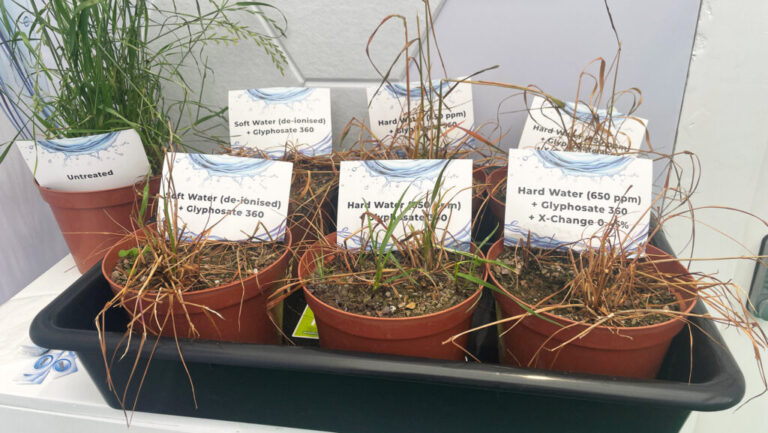Farmers could be losing up to 30% efficacy of glyphosate in hard water areas, thereby increasing the risk of grassweed resistance by delivering a sub-optimal kill.
The discovery of glyphosate-resistant Italian ryegrass in Kent earlier this year has put the spotlight on the responsible use of the herbicide.
To help farmer’s achieve this, De Sangosse has produced a new stewardship guide in association with Adas weed expert John Cussans.
See also: How cultivation can control resistant Italian ryegrass
Launched at Cereals, the guide delivers clear, practical advice to help growers optimise glyphosate performance this coming autumn, ahead of drilling.
At the heart of the guide is a look at how glyphosate interacts with water in the spray tank.
Stuart Sutherland, technical business manager at De Sangosse says many farmers visiting the stand at Cereals admitted they don’t know how hard their water is, “so we are encouraging them to test their water.”
He explains that farmers could be losing up to 30% efficacy due to the calcium and magnesium in hard water binding with the active. This renders the glyphosate inactive, and this process is irreversible.
However, this can be solved by the use of a water conditioner like the company’s X-Change, which binds with the minerals before adding the herbicide.
He highlighted a trial comparing Italian ryegrass plants treated with glyphosate (equivalent to 3 litres/ha of Round-Up 360) in de-ionised water and in very hard water (650ppm) with and without a water conditioner.
It showed a decline in efficacy with hard water and the conditioner brought control back to the level with the de-ionised water.


